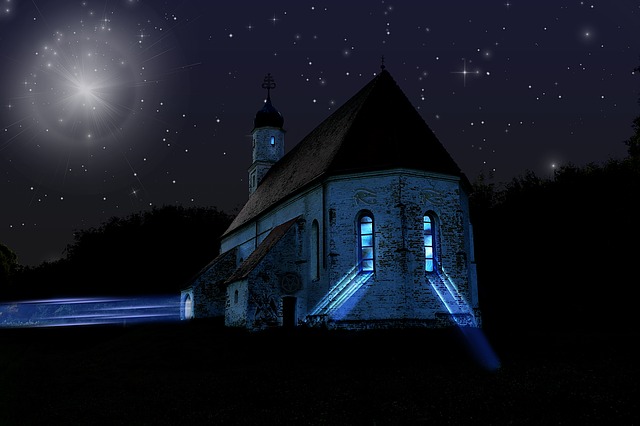1884

Her face went out of focus as her eyes fell on me. Though she wore a veil, it wasn’t the reason for the wrinkle in space. I couldn’t blame the hanging dust either. The truth was I didn’t know what to think. A wooden staircase behind her rose about six feet before meeting the hexagonal pulpit box. The plaster walls were dingy to the point of turning blue and the unstained leadlights gave away the congregation’s low standing. Even her groom, who looked distant as he considered the path ahead, cut a sharp figure through the tenebrous air. All of these things were clear, but the woman’s face was not.
The couple’s march proceeded from the pillar on my left to the one on my right. Thanks to the clutter of people and chairs, this frame contained everything I could witness of the ceremony. It seemed that few other people were paying much attention and so I guessed that few had noticed the change. You might find it strange that children were playing and women milling about as the organ droned, but this was not your dandy Episcopalian high church where everyone shows up with footmen trimmed in the family livery. The attendees were, however, dressed in their finest. The woman nearest me held her Bible in a worn but beloved velvet glove. Her daughter squirmed nearby, likely itching to be free of the feathery monstrosity that was a common means of torturing children with their clothes.
Then the bride’s face rotated back towards her future husband. I panicked. Her features resolved and each line on her face, one by one, stropped to a razor edge and defined the borders of her existence in that time and in that place. As the pair approached the parson, their audience began paying attention. Each of those little movements seemed to tug a string across the frame before me, darkening the edges and dulling the colors. It struck me that the bride was very close to the pillar on my right and would soon be out of view. I don’t know how, but it was clear that her departure would spell the cessation of everything I could see.
It was she that had been holding the moment together. I glanced at my watch. It had been hours since I first noticed the strangeness in the woman’s image. Hours to walk the space of a few feet. Somehow she’d developed the power to hold time and space still, to capture a moment. This required that she fade away; not too much, but just enough to impede the world’s progress - or at least the progress in that part of the world trapped within our little chapel. Returning to focus meant returning to the task at hand. Everyone else cooperated without knowing it was she that compelled them to do so. That soft and pleasant moment of chaos came to order.
Why did she choose that moment to dispense her unique skill? I suspect she had one opportunity to do so and had saved it for now. I don’t think she would’ve done it had she regretted the marriage or the hand of the man who guided her. She must have understood that she was relinquishing more than the freedom to stop time, but it was just as well. The pressures of time and place could not be held back forever. Contentment, if not true happiness, was a reasonable hope. What she wanted to make sure of was the one thing, that she picked the right juncture to say,
“This is what I am. I am no one, except that I can make you remember me. It is enough.”
And she was sure of it. She was surer than anyone else in that room. Deeper than the other women, more confident than her groom, more still than the children, more durable than the walls around her. I can only be grateful that she choose, whether by purpose or accident, to look at me in that moment, to seek me across the chasm of time. The thread went taught and we were at the ends. What forces lead us to that fleeting suspension are still mysterious to me, but I am better for it nonetheless.
i loved this line, brilliant. more of this
p.s... reference your image source it would be cool
Thanks for the feedback! I'm happy you enjoyed it. Yes, I am sometimes negligent in the source info. The image is from pixabay. Thanks!